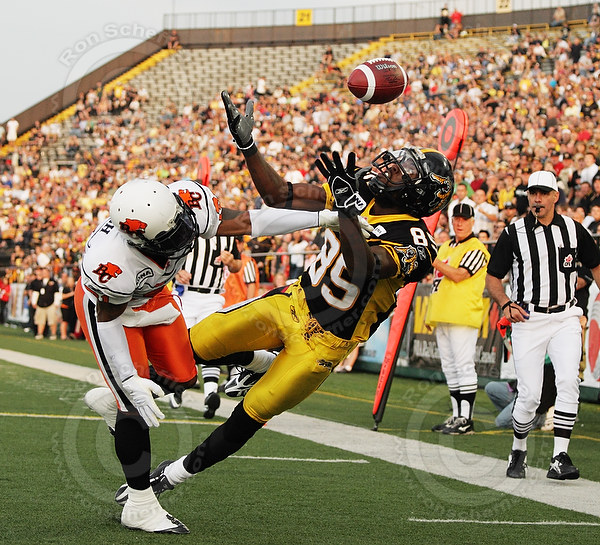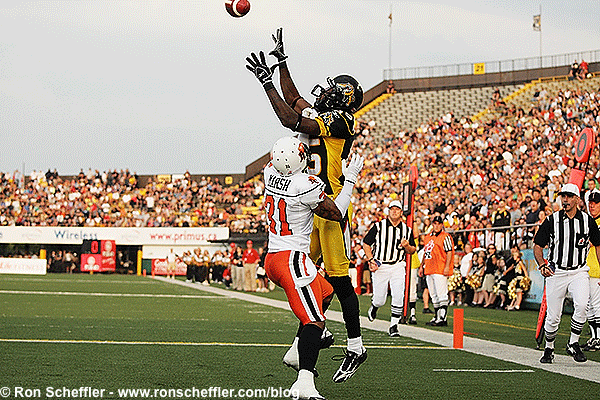
It’s nice to be in the right place at the right time and come away with a sequence like this!
It’ll be a few days before I post the final selection of images from this game to my CFL photo gallery but got a nice sequence of Tiger-Cats wide receiver Prechae Rodriguez making a touchdown pass under pressure.
The animated GIF below is a bit large, so give it a moment to load the entire sequence.

Dear Sir,
It takes a little bit of luck, and a whole lot of skill to take such excellent Tigercat pictures. Keep them coming!
Bob Jackson
Awesome shots. What lens do you use with your Mark III and what would be your choice of memory card over the CF? I photograph dancers and encounter the same issues. If I shoot a fraction of a second too soon I miss the highlight point of the jump. I’m somewhat of a newbie and your advise would be most welcome.
Linda Schettle
Hi Linda, thanks for taking the time to check out the photos. The Prechae Rodriguez sequence was with the 70-200 f/4 at between 85mm at the start of the catch and 70mm at the end, at f/4. Generally for football I like to work with two or three cameras. The main will be with a 400 or 600mm lens. The second camera, around my neck, is with the 70-200 f/4. If it’s at night, I’ll use a 135mm f/2 instead, or if it’s NFL, the 85 1.8 (it’s a smaller field and the action is often closer). On the third camera is a 16-35, and it hangs off my right shoulder because it’s the one I use the least. As for CF cards, if you’re referring to what I wrote in the post for the August 8th game, I normally use Sandisk Extreme IV 8GB CF cards, but opted to use a couple 16GB Extreme III cards due to the rain, so I wouldn’t have to switch them as frequently. The problem with action and the Extreme III cards is they write slower than the IVs, so it keeps the Mark III camera waiting longer to clear the buffer. Some SD/SDHC cards are even faster in the Mark III than CF cards, but they are generally slower to download to the computer. So for the time being I still prefer CF cards, particularly the Extreme IV, or anything else that is UDMA compatible. I assume that the next generation 1D camera will support UDMA write speeds, which should clear the buffer a lot faster. Canon’s decision to leave UDMA out of the Mark III is something I don’t understand, as it’s the very camera in which one would want that feature.